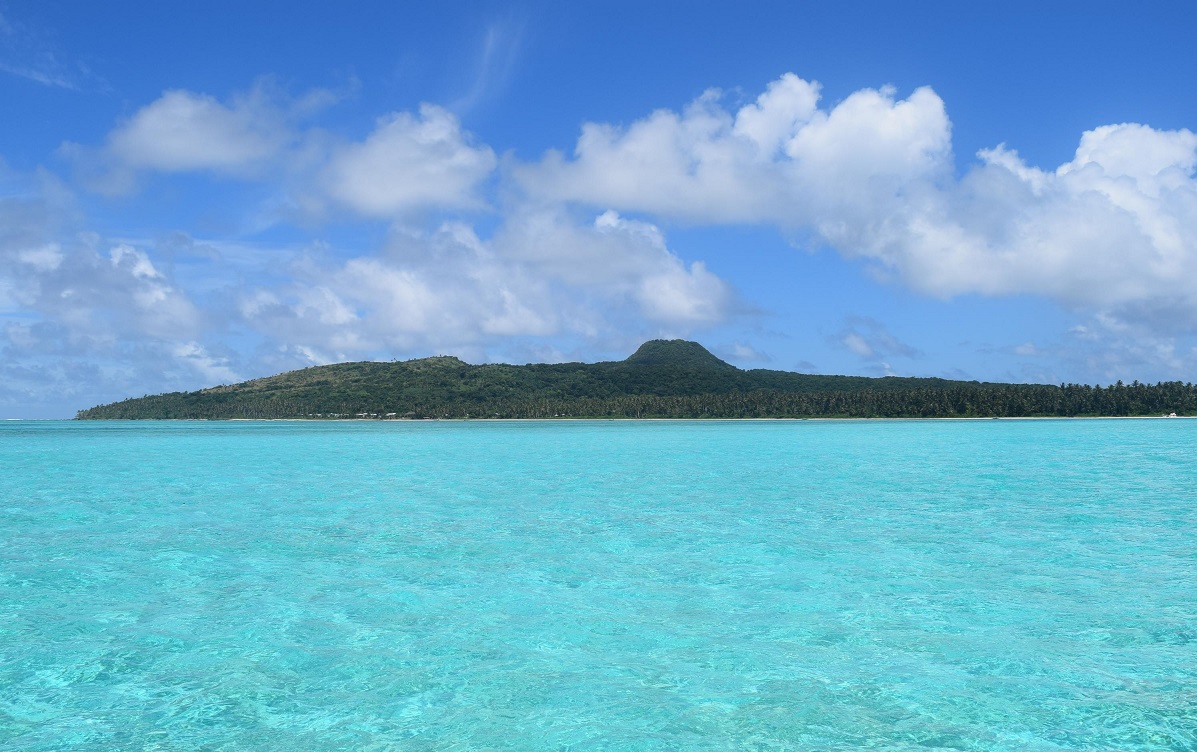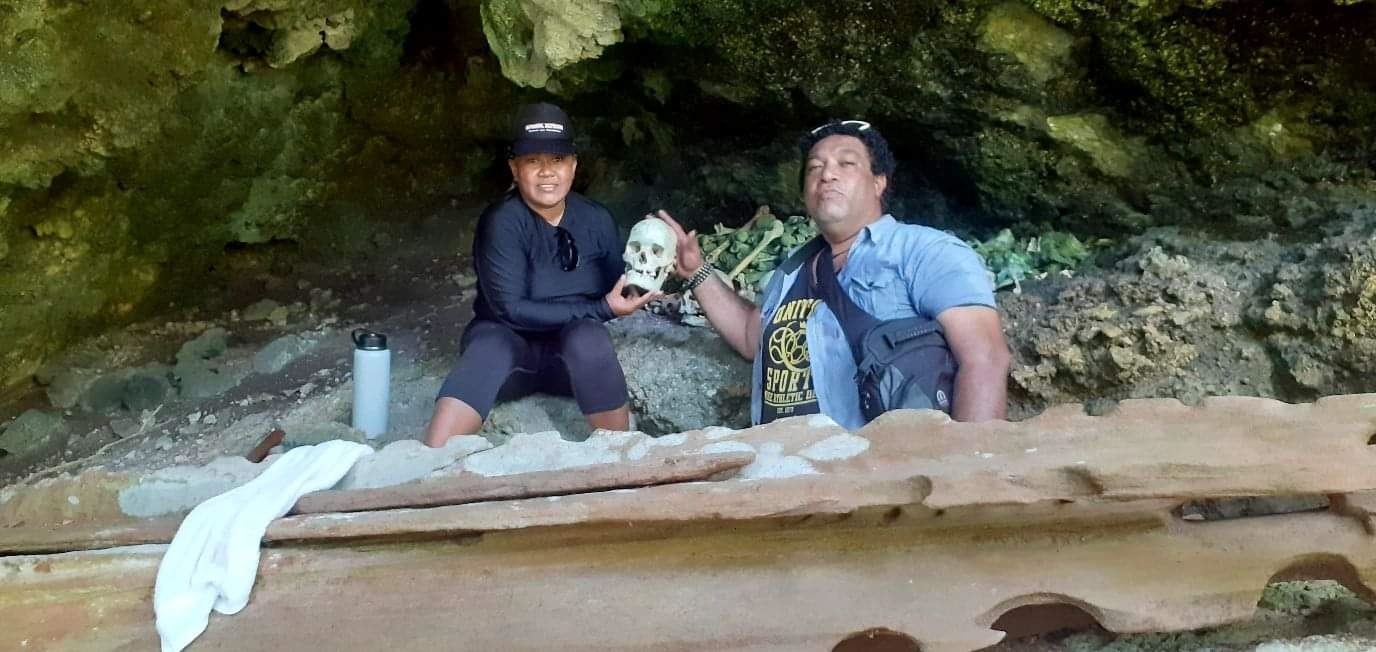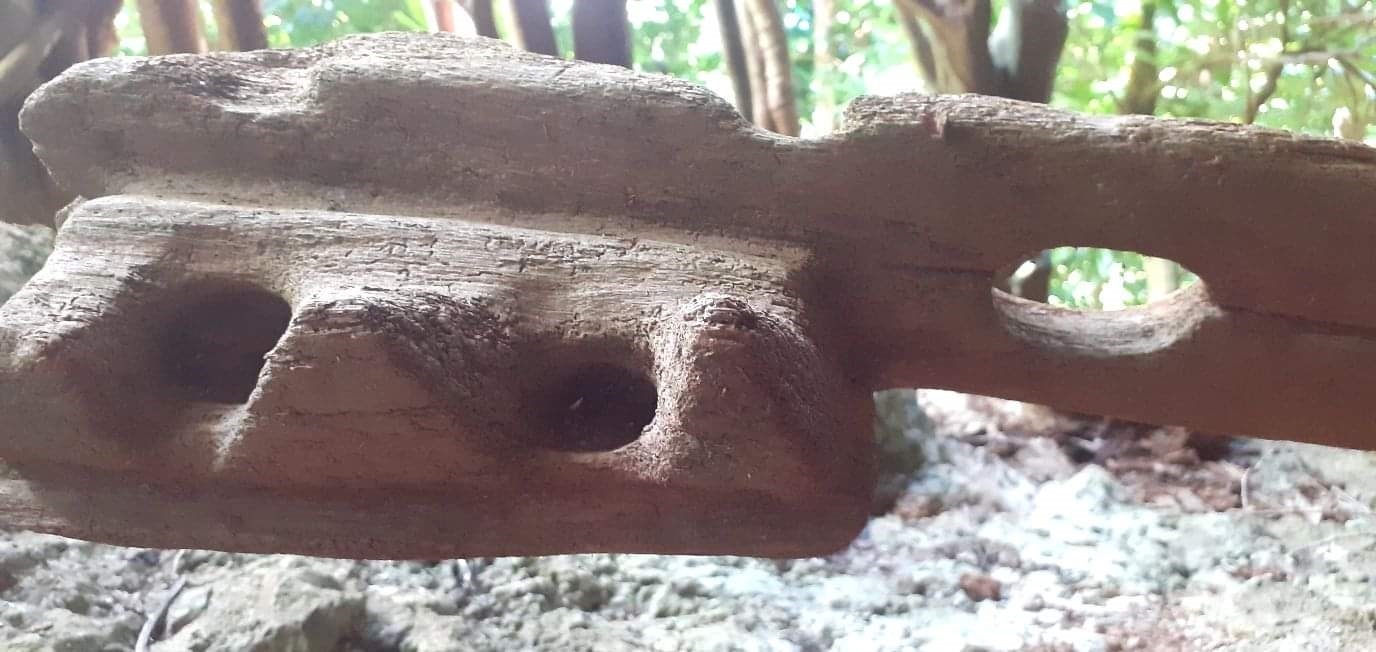Discovering Fiji: The slaughtered Tongan warriors – A cave of bones Featured
 Tongan skulls and other bones inside Qarasui. Picture: LEBA VULAKORO
Tongan skulls and other bones inside Qarasui. Picture: LEBA VULAKORO
22 March, 2021. At 8am, while the sun’s rays were still tolerable and kind, we began a slow ascension to Yacata Island’s highest peak – Korolevu.
Here, centuries before the arrival of the white man, tribes set up their first village fortress called Kakabale.
Like other stone forts at the time, it looked formidable and menacing. Kaibu and Vatuvara drifted close by, while Naitauba looked like a pixilated picture on the horizon.
Several generations later, marking one of Fiji’s well documented wars, one of Korolevu’s caves became the permanent resting place of a huge stock of human bones.

Yacata Island’s highest peak – Korolevu. Picture: JOHN KAMEA
History contends the bones belonged to Tongan warriors who were drafted to join Enele Ma’afu’s army during his ambitious military conquest in eastern Fiji.
They were killed on the island.
To bring you the story, The Sunday Times recently visited Yacata, better known as the island home of Sefanaia Sukanaivalu, Fiji’s war hero and the only local recipient of the Victoria Cross.
Yacata is also synonymous with the name Laisa Vulakoro, Sukanaivalu’s niece and Fiji’s most famous female entertainer whose voice has catapulted the local genre of music vude to international heights.
Backed by the sacred blessings of village elders, my small team of three, including Leba Vulakoro and Sairusi Vakaloloma, scaled through mountainside shrubs and thorn-infested mimosa bushes that were unkind to the skin.
We were instructed to travel light. Tipping the scale at 170 kilograms, that meant I had to hike with not too much water and not too much clothes.
On the outskirts of the village, before towering palms start their endless lines into the jungle, we stopped for a photograph near the Tobunimalaria.
Algae-flushed, this stagnant pool greeted us like a pot of green witches brew.
“Our ancestors used to bathe in the pool but they never caught any skin infection. The pool was believed to possess curative qualities,” noted Sairusi, the tour guide.
Walking through a foreign bushland can both be exhilarating and intimidating.
That’s because nature has a peculiar way of making the outdoors seem unfamiliar, if not terrifying.
What may catch you off guard are the rare sounds of the wilderness, including the highpitched vocals of serenading birds, the hissing sound of bough rubbing against bough and the ghostly whispers of ocean breeze.
Yacata is an island within the province of Cakaudrove somewhere between Taveuni and Vanuabalavu.
Estimated to have been settled well before the 1800s, the island is endowed with caves as well as the world’s largest arthropods called coconut crabs or ugavule.
Among the first to arrive on Yacata were its warrior clan followed by a group believed to have migrated from Vuna on Taveuni who now make up the chiefly clan.
The last to arrive were settlers from Qamea and Laucala who today perform the role of herald to the Tui Yacata.
If you stand on Yacata’s coastline, Korolevu looks like a hump somewhere in the centre of the island.
At the foothill of this formation is the old settlement of Kakabale.
Today, Korolevu’s foothill boasts a number of caves, one of them, perhaps the most famous, is called Qarasui.

Posing with a Tongan skull with part of the Tongan canoe in front at Qarasui. Picture: SAIRUSI MATEVAKALOLOMA
The cave is a custodian of bones belonging dead Tongans who were slaughtered by Yacata warriors around the time in history when the battle of Wairiki was fought.
To this day, remains of former village sites and stone forts can be spotted at various locations on the island.
From Korolevu, it is understood people moved down to the sea, places like Samuta, Samulakana and Nacivaciva mark their movements on the island.
Straight after Tobunimalaria, the hill began a subtle rise.
On both sides of the track, plantations made their presence felt with patches of bele, banana and kumala plants.
My team made an unplanned pause before Vunibau, a tall tree that is the official first pit stop for tourists who visit Korolevu to view its cave and bones.
“This is where my ancestors were settled when Christianity first arrived on the island,” Sairusi said.
From Vunibau, houses were reduced to miniature homes, arranged neatly around the rara or village green.
According to stories passed down through generations, Qarasui was first deposited with parts of a Tongan sailing canoe and skeletal remains around the mid-1800s.

Remains of the Tongan sailing boat. Picture: LEBA VULAKORO
This was during the reign of Yacata’s third chief, Ratu Ilaitia Baleinamoto.
“After convincing many island chiefs in Lau to join in the fight against Tui Cakau, Ma’afu’s warlord, Wainiqolo landed on Yacata and requested their support for the battle of Wairiki, Taveuni,” said Etuate Vulakoro, a senior member of Yacata’s warrior clan, Dakuicake.
Wainiqolo was Ma’afu’s right hand man who waged battled against Tui Cakau, whose name was Ratu Golea, while Ma’afu was in Tonga.
“However, our chief told Wainiqolo, “I’m sorry my people and I cannot go to war against our own paramount chief!” Mr Vulakoro said.
“He told Wainiqolo,” you go and wage war against Tui Cakau. If you survive, come back and we’ll meet.”
History tells us the Tongans eventually lost that war. Many were clubbed to death, roasted in lovo pits and eaten.
Some were spared their lives and sent back home to warn their people.
Others escaped northeast, hoping to find favour among the people of Yacata.
However, still exhausted from the Wairiki skirmish, they were massacred as soon they landed.
According to Matai Vulakoro, Etuate’s younger brother and a former tour guide to the Korolevu cave those who were slaughtered and eaten were Tongans and some natives who had defected from Tui Cakau.
“They were slaughtered, put in a canoe and their kinsmen who survived were forced to carry them up the mountain to Korolevu,” Matai explained.
Many bones including skulls were placed in the cave but only a handful remain today. Some have been removed by visitors to the cave, others scattered by giant ugavule.
After Vunibau, we made another stop under a mango tree above a cave called Qaranilulu.
Here we quenched our throats and snacked on homemade pancakes before moving on.
By 10am, after climbing for almost two hours, we reached the entrance to the cave.
It did not have dropping formations such as stalactites and stalagmites but boasted a sturdy network of banyan roots that shielded the bone grotto from the scotching sun.

Banyan roots shield the mouth of the cave. Picture: LEBA VULAKORO
One of the adult skull bones still had teeth.
Others had holes in them. Bones that looked like those belonging to the limbs and curved ones of the rib cage had a slight green discolouration, perhaps the result of ageing.
“A hole in the skull means the person was clubbed to death,”Sairusi said.
“I heard there was a huge lovo pit below this cave so there must have been a huge feast at this place a long time ago.”
In an earlier interview with this paper, Laisa Vulakoro, said one of her best childhood memories while growing up on Yacata was adventuring with her dad through the forest.
This was during the late 1960s and early 70s.
“My dad took me everywhere with him because he thought I was strong, in fact, stronger than my brothers. I could climb trees and rugged rocks barefooted,” Laisa told The Fiji Times.
“We would look for ugavule and dig tivoli (wild yams), and if we were still in the forest by lunchtime, dad would light the fire and he’d tavu a crab and some yams in the open fire while telling me Bible stories.”
Laisa’s favourite jungle activity was playing with dead people’s skeletal remains found in those caves.
“Yacata had a lot of caves that had bones in them. My dad always told me to treat them with respect.”
“Coconut crabs would scatter these bones so my job was to put bones together neatly, all the thigh bones, arm bones, and skulls in separate piles. But when we returned the bones would be strewn again by crabs.”
Yacata’s association with Vuna in the past is evident in their sharing of ancestral god, totemic plant, fish and bird.
In fact, the island was part of the district of Vuna until the end of the war against the Tongans in the 1860s.
To thank the people of Yacata for maintaining their allegiance to Tui Cakau during the Tongans’ conquest in Fiji, they were brought under the ambit of the chiefly district of Cakaudrove.
Today the yavusa of Yacata is treated as the guardians to Cakaudrove’s chiefl y household.
Islanders are fondly referred to as “qase” or elder.
After the defeat of Wainiqolo at the battle of Wairiki, Tui Cakau displaced all his people who defected and sold their islands as punishment.
Yacata was spared.
Tui Cakau also sold Vanuabalavu but the sale was later reversed.
- The Fiji Times



